Step into the world of traditional Mexican artistry with a captivating Teotitlan del Valle rug weaving tour. Teotitlan del Valle is an intimate community of artisans less than an hour’s drive from Oaxaca City’s center, who’ve mastered the generations-old art of rug weaving. In this rich cultural enclave, each rug narrates a unique story, woven through generations and embodied in every intricate thread. Join us as we dive into this extraordinary experience, allowing these experts to guide us through a world steeped in color and tradition. Whether you’re a curious traveler, an art enthusiast, or someone seeking an authentic Oaxacan experience, this rug-weaving tour promises a fascinating glimpse into the heart of Mexico’s enduring craftsmanship.
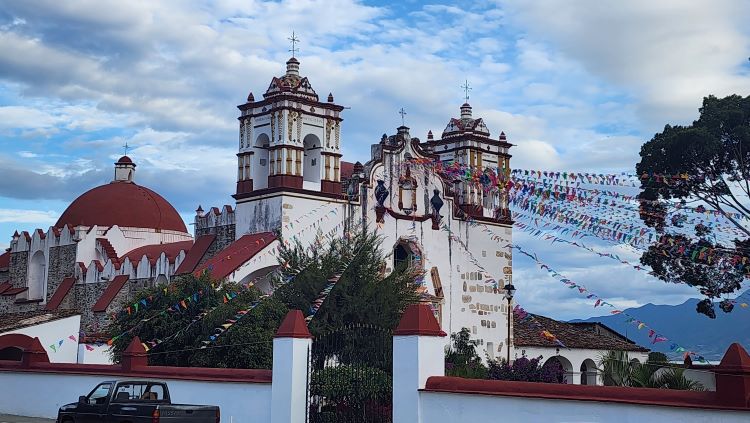
Turn off Hwy 190 and take Avenida Benito Juarez toward Teotitlan del Valle. The town itself has a lovely town square and a beautiful church. Museum was closed when we came because they were holding a town meeting. But the town itself has many shops to walk through and all forms of wool products to consider.
But just off the highway on Avenida Benito Juarez is where we found Tejidos Zapoteco. The family that works here has been working with wool for seven generations. This family of artisans is happy to share their passion for weaving with you. We’ll walk you through what to expect on your tour here.
Get Your Travel Goals Newsletter & BONUS Workbook
Weaving is an art passed down through generations, and every member of the family participates in the process. We learned how each person in the family has a role to play in preparing the wool, dying the wool, and weaving the rug. Young children in the family have small looms where they can practice creating small pieces as they build the patience to work up to larger pieces like rugs that can take months to make.
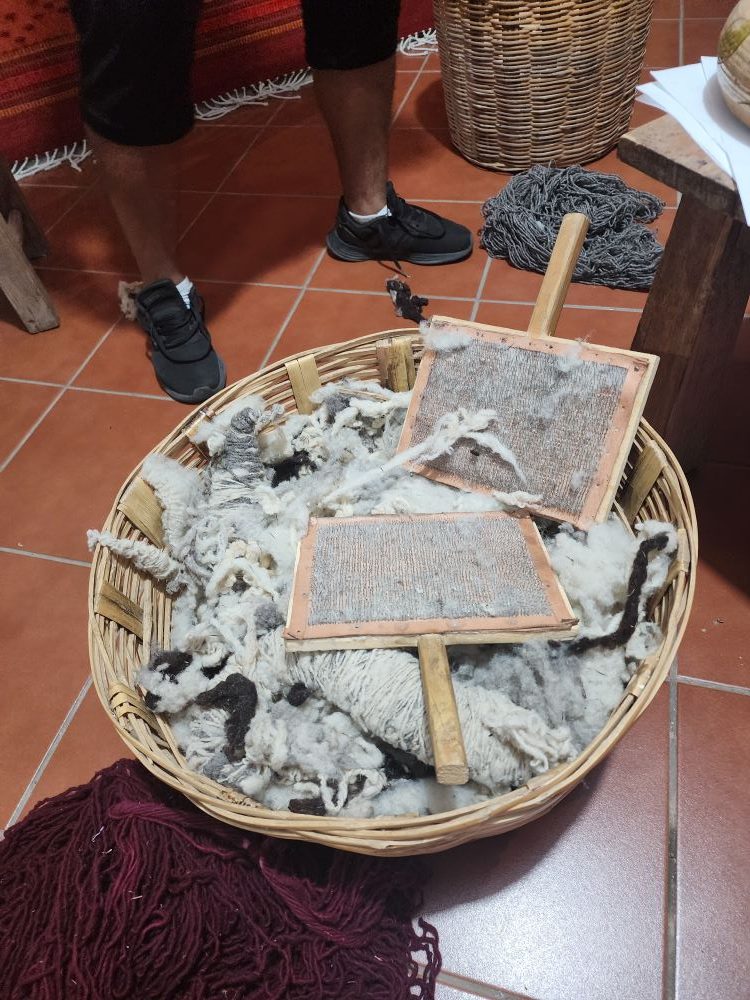
Sheep wool has been the primary material used in Zapotec weavings for centuries, but it wasn’t always the case. The domestication of sheep was introduced to the Zapotec people by the Spanish during the conquest in the 16th century. Since then, the Zapotec have expertly harnessed the wool from these animals to create intricate and vibrant rugs, tapestries, and other textiles. Cleaning the wool from all of the debris that it can carry is a vital first step. This is very laborious and as you can imagine takes a bit of muscle. Spinning the wool to tighten it to the string that can then eventually be dyed.
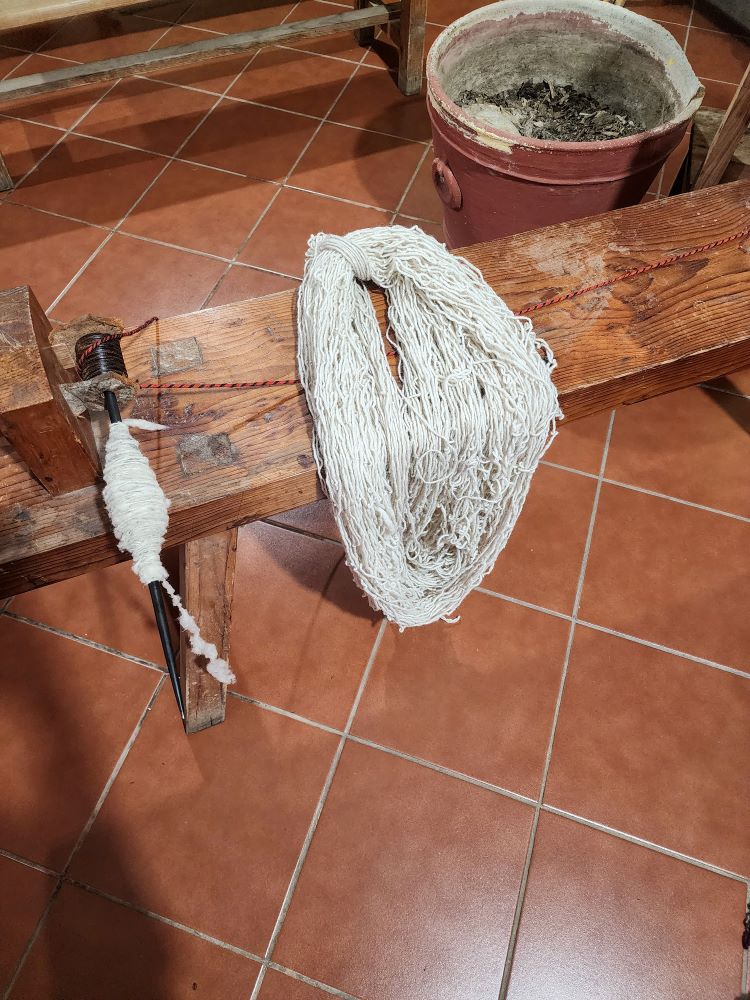
All of the colors are created naturally. An insect that attaches itself to the cactus creates the red dye. That white that you see on the cactus surrounds the insect. When crushed a chemical reaction in the shell creates the red color.
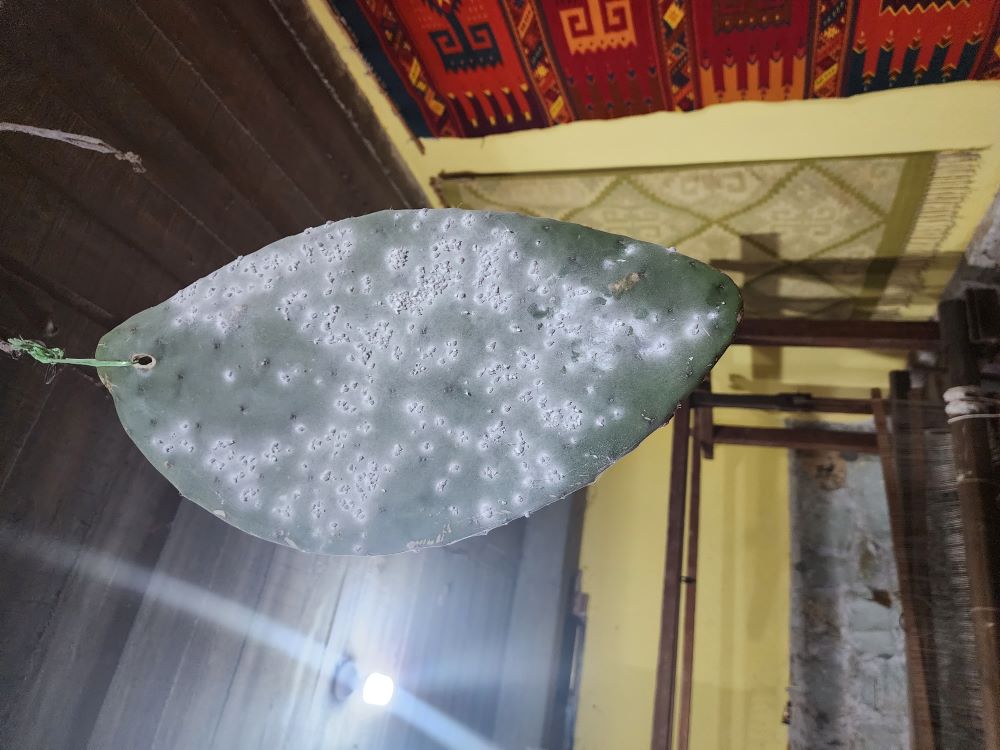
Making indigo is no easy task either. It is a long process to ferment and prepare the indigo so that it is ready to be used. Products with more indigo color can reflect a higher price because of this labor-intensive process that can take up to two weeks.
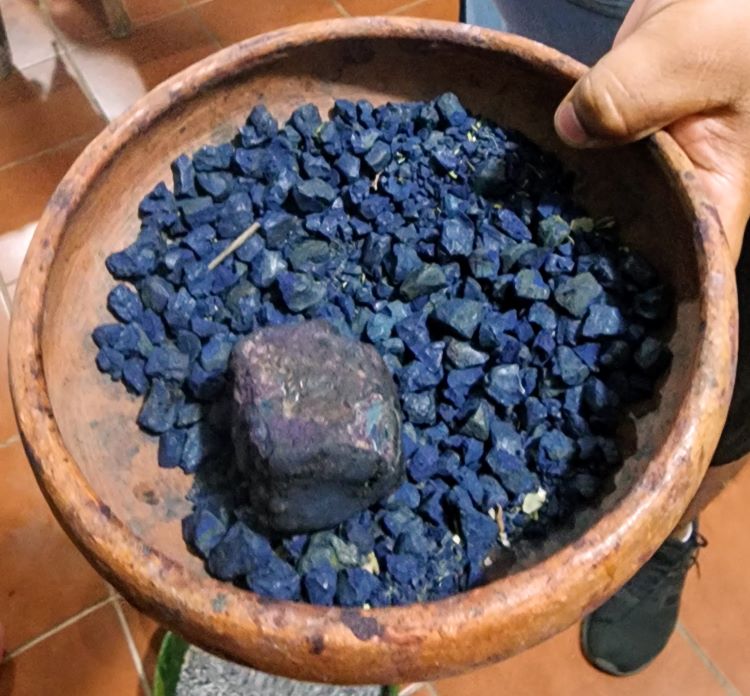
All natural dyes create the colors for the wool. With all the various natural ingredients they have combined with different elements that create chemical reactions, such as alkalines, they can create all the colors they need.
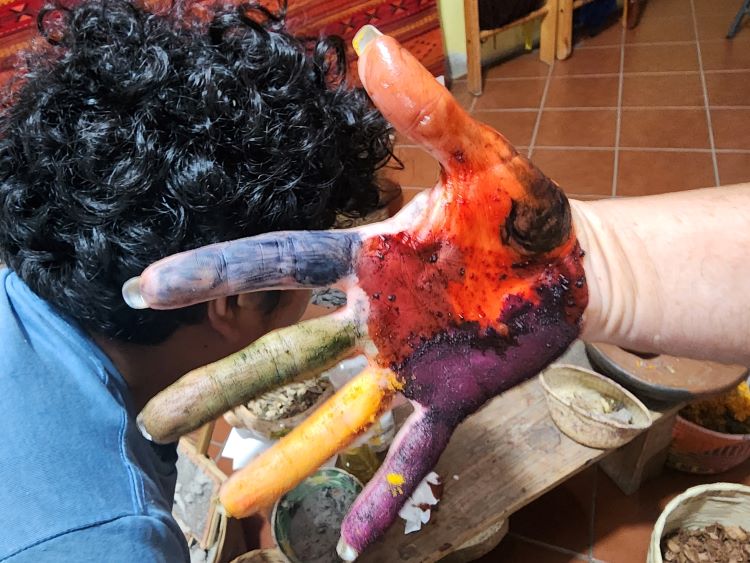
And how long the colors stay in the dye and how early they go into the color determines the depth and tone of the color.
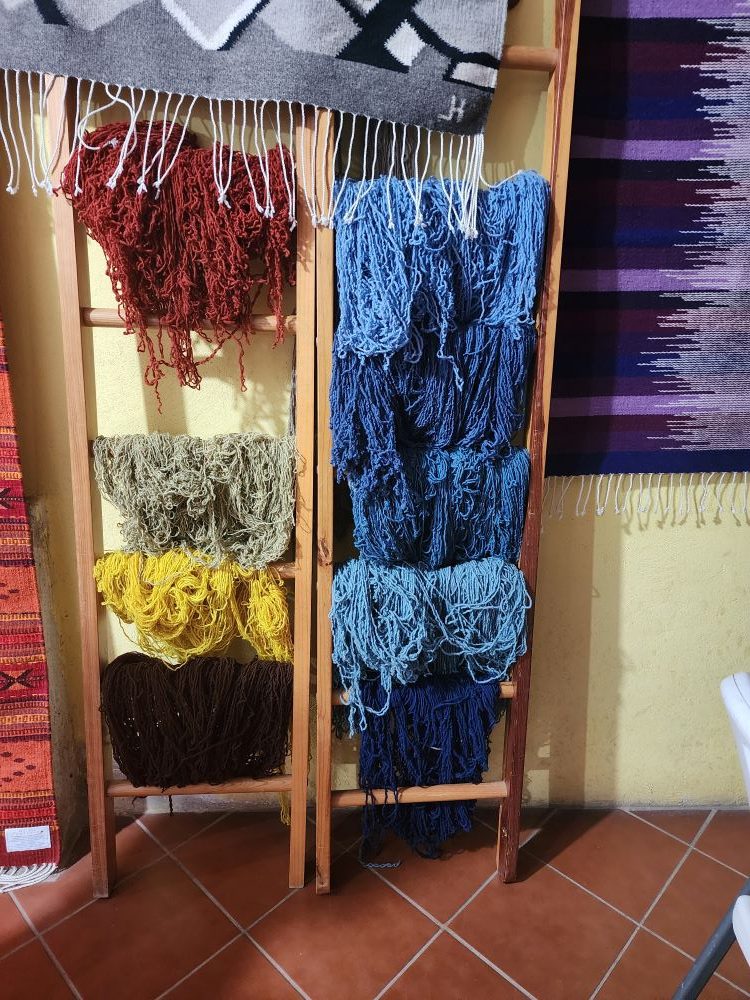
They then demonstrated how a trace pattern can be used to map out the wool rug on the loom.
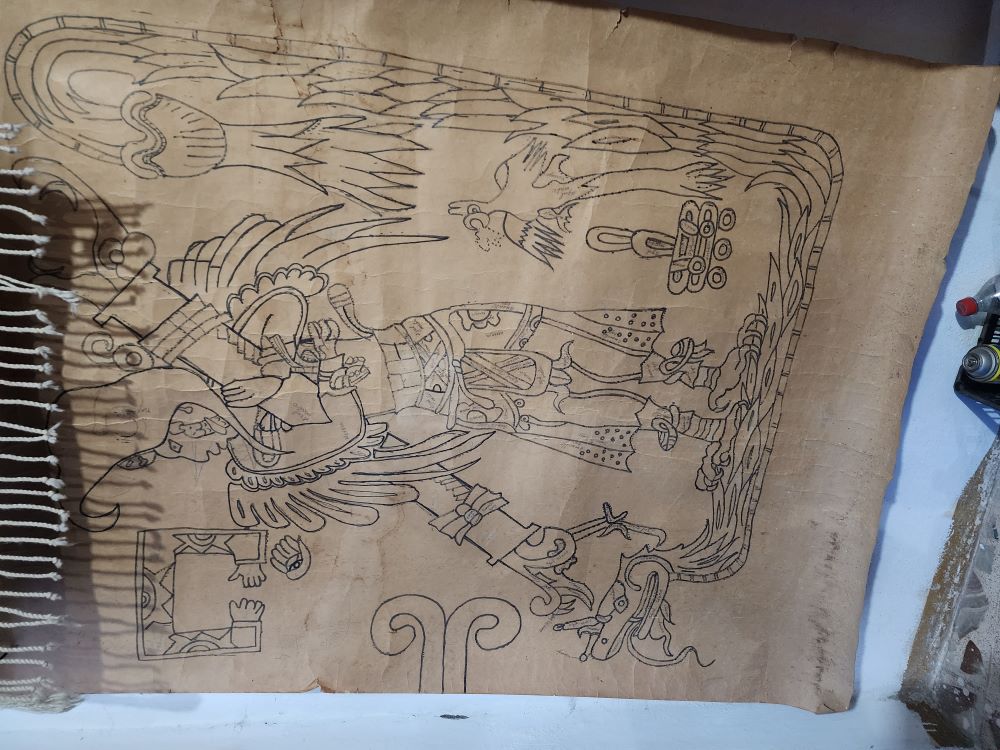
The same pattern is traced onto the loom and then followed with the different colors of wool to create the full piece.
Get Your Travel Goals Newsletter & BONUS Workbook
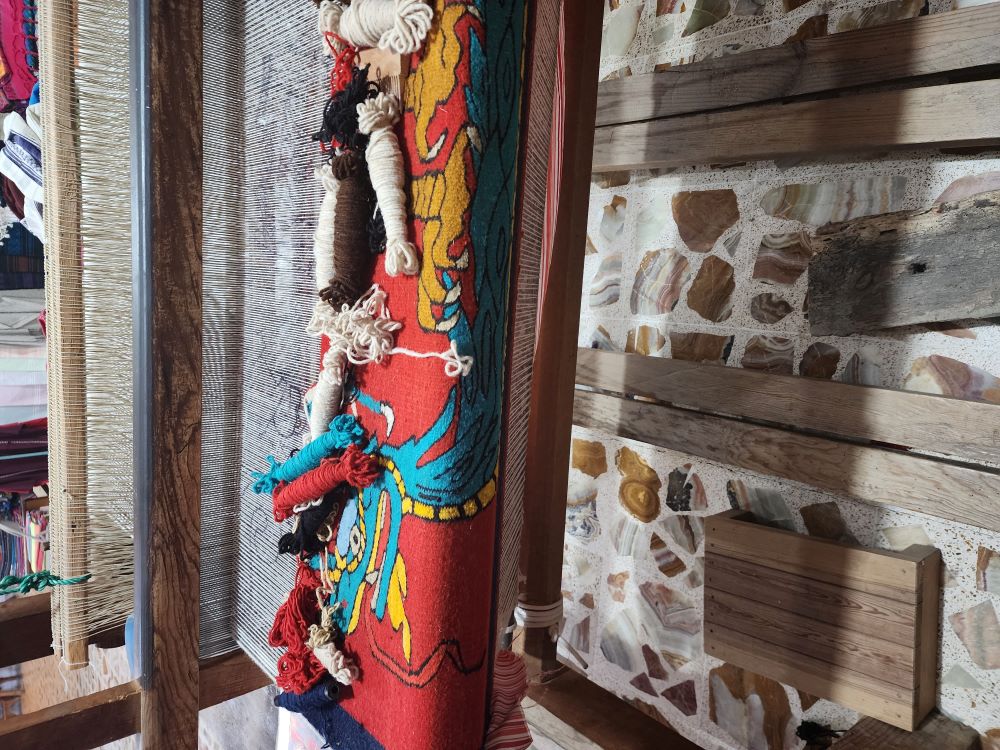
We had a chance to see one of the rugs being finished and Norman got the opportunity to cut it from the loom. They can then either tie the strings together or tuck them into the rug so they do not hang.
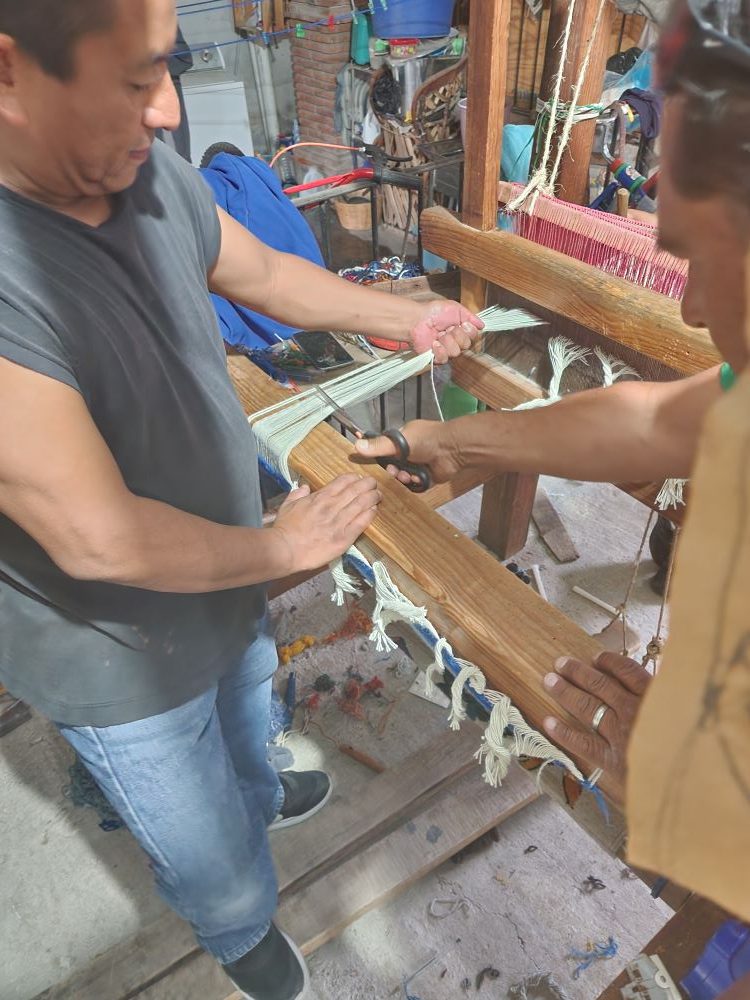
Visiting Teotitlán del Valle offers an authentic glimpse into the heart of Zapotec culture, and the weavings you find here are more than just decorative items—they are a direct link to an ancient civilization’s cultural legacy as well as a personal piece for the person who requests it as each commission can be customized to a person’s wish. This piece pictured below represents a family tree.
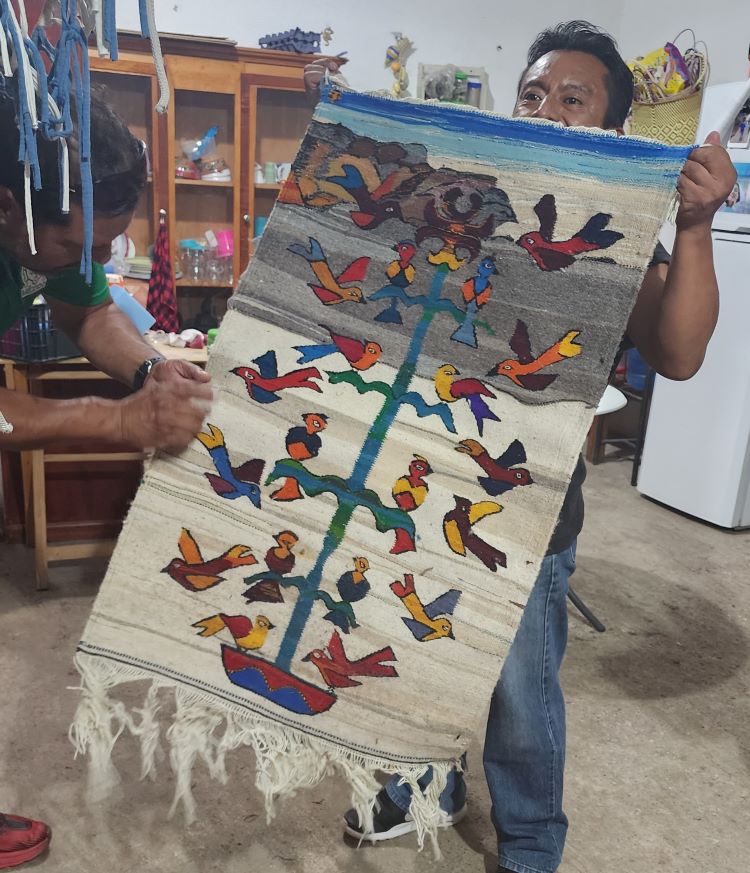
The skill and dedication that the Zapotec people pour into their weavings are palpable. Each design is not just an aesthetic expression but also carries profound cultural and spiritual meanings. Many of the patterns found in these rugs represent elements from Zapotec cosmology and their connection to nature, such as life, death, and the universe.
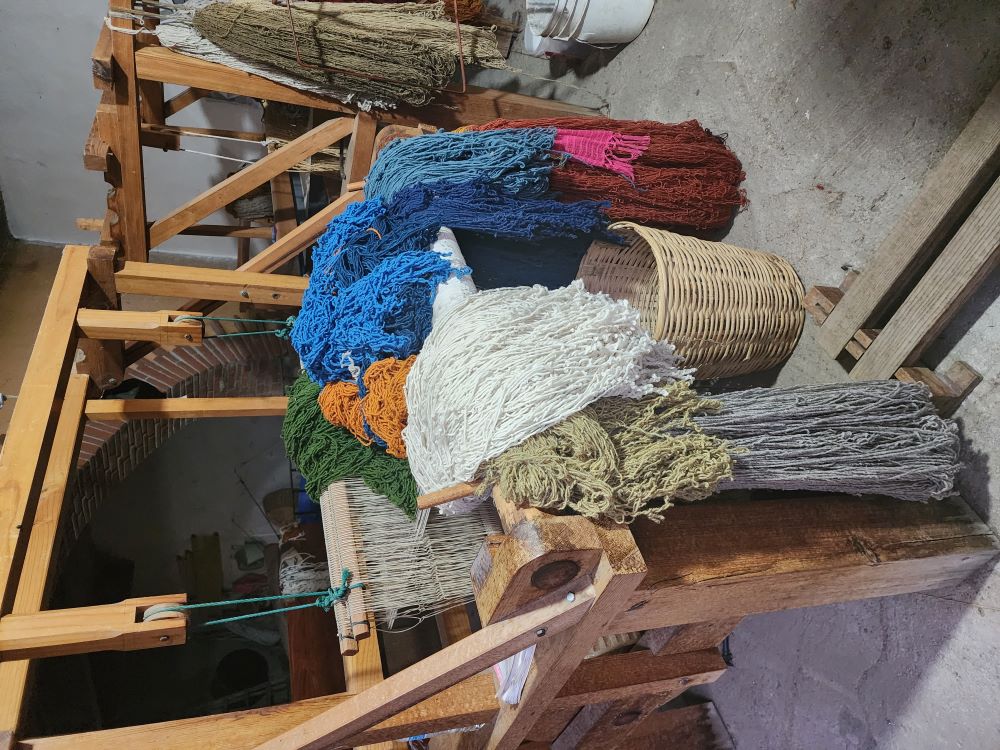
The rug pictured below was one of our favorite pieces though there are numerous styles, both traditional and more modern, that you can choose from. Now you have a greater understanding of the steps, the passion, and the commitment that goes into each piece. The art of weaving has become a symbol of identity and pride for the Zapotec people, honoring their ancestral traditions while providing a sustainable livelihood.
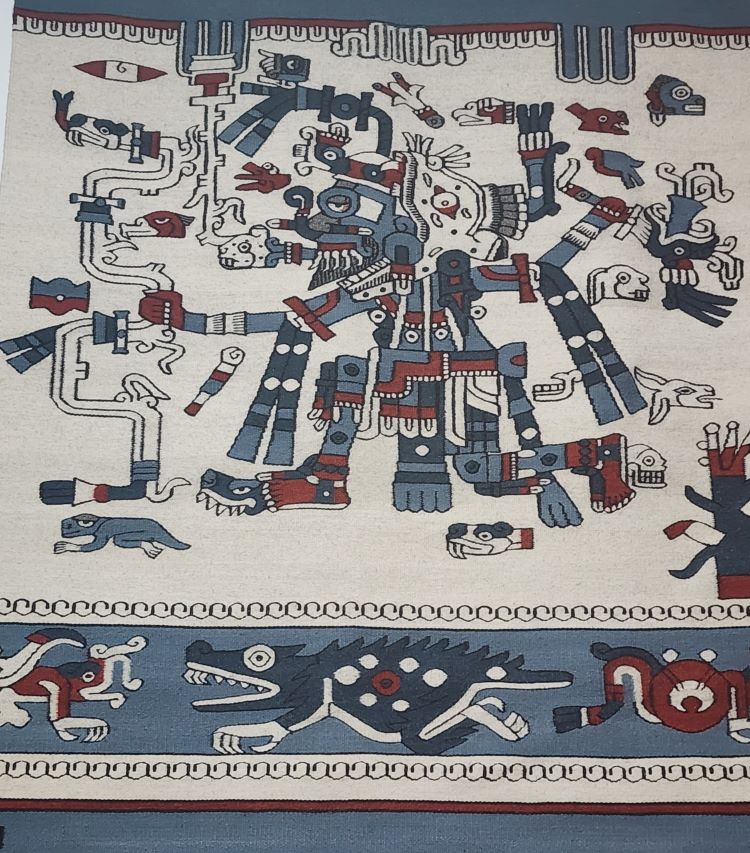
If you are planning to stop at Teotitlan del Valle during your visit to Oaxaca City please do let us know how it goes! We’d love to hear from you. Just leave a comment below!
